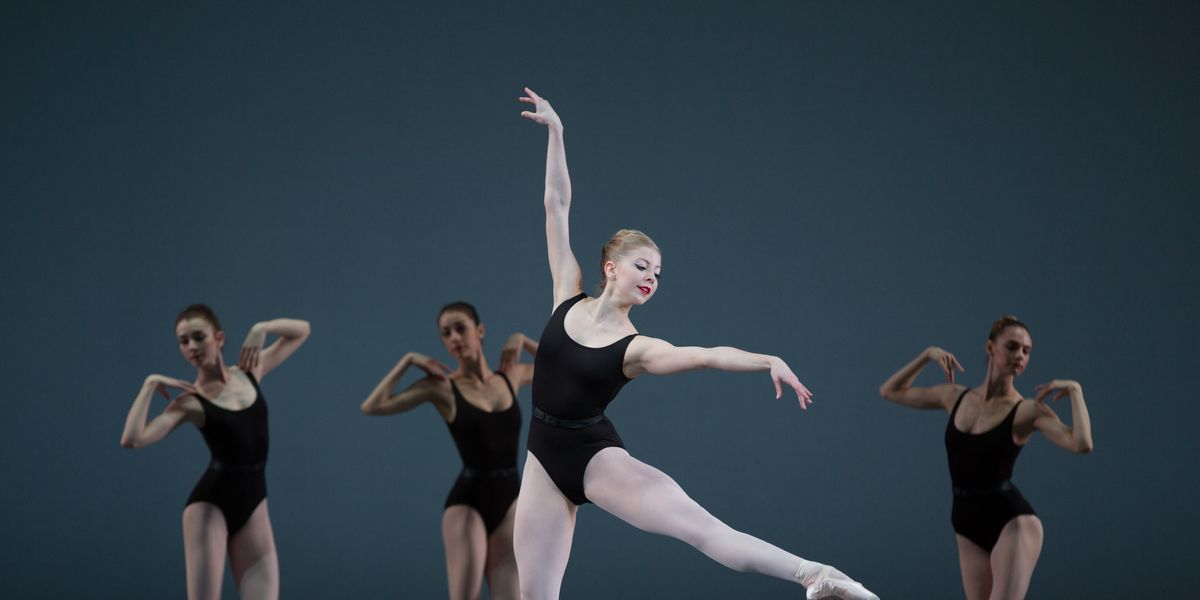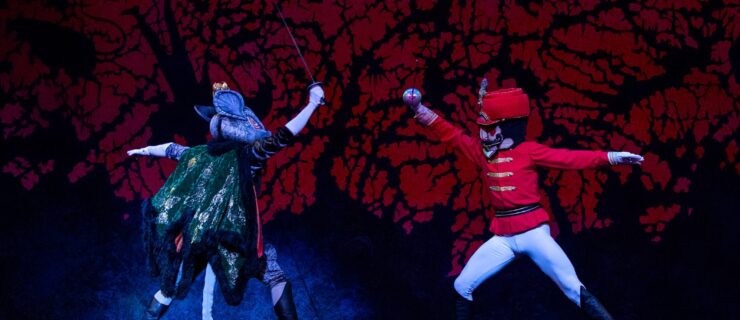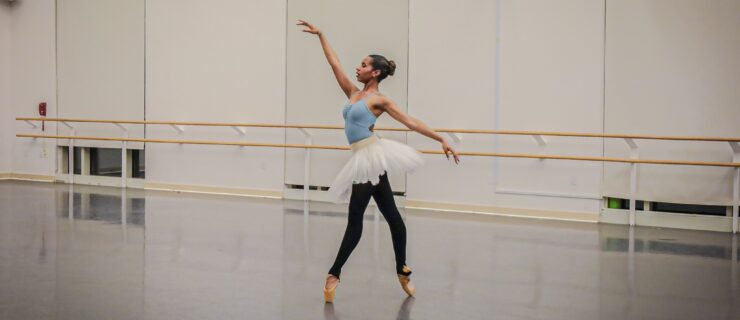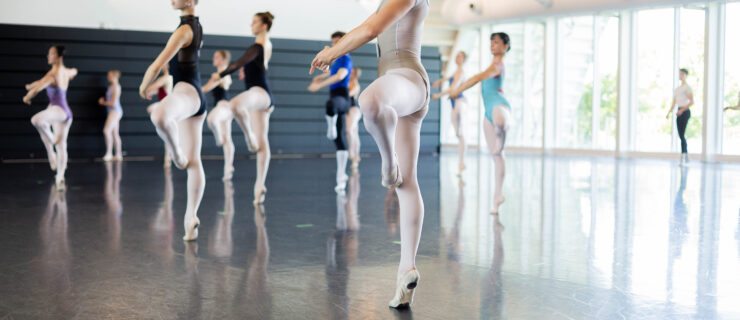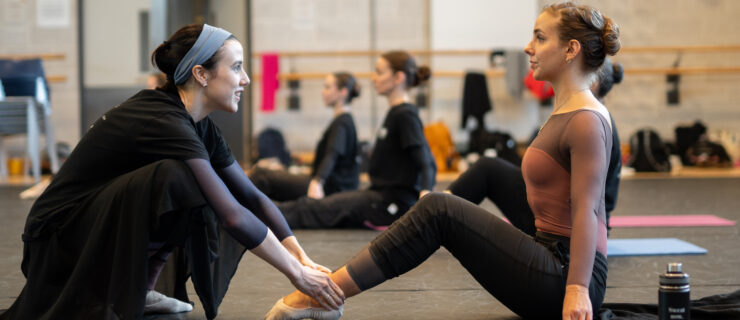Got Goals? Here's How to Effectively Reach Them.
Updated 12/22/22.
When Miami City Ballet principal soloist Dawn Atkins was a little girl, she set a goal: to be a principal dancer by age 21. More specifically, a principal at New York City Ballet. Atkins was a successful student, joining Boston Ballet School’s trainee program in 2011. She moved up to Boston Ballet II the following year and was given a company contract in 2013. But it was after knee surgery in 2015 that Atkins completely changed her approach to dance goals. “I had to set small ones, like being able to plié on one leg,” she remembers. “I learned that I had to be kind to myself and celebrate those little goals.”
Goal setting can help you advance as a dancer and a person. But it’s easy to overly focus on far-off accolades rather than on meaningful advancements that will take you to the next level. “One should aspire to have dreams, of course, but it is important to keep reality in perspective,” advises former Pittsburgh Ballet Theatre School co-director Dennis Marshall. Instead of tethering yourself to a dream that is ultimately out of your control, you can learn to set goals that will feed your dance career and your confidence.
Be Practical
 Jennifer Ringer teaching at the Colburn Dance Academy. Courtesy CDA.
Jennifer Ringer teaching at the Colburn Dance Academy. Courtesy CDA.
Dance Conservatory Charleston faculty member Jenifer Ringer warns that dancers who try to hold themselves accountable to an ideal, rather than a reasonable goal, are far more likely to become discouraged. She advises her students to specifically avoid goals that are focused on title and accomplishment.
“I wouldn’t say that I want to be a principal dancer in a specific company—a very small percentage of students will get there,” she says. The purpose of goals, she adds, should be constructive improvement. “I think a better long-term goal is to be the best dancer you can possibly be and then see where that takes you.”
In retrospect, Atkins sees that the biggest problem with her childhood aspiration was that she had attached it to a timeline. “It is unreasonable to expect to be a principal dancer by 21,” she laughs. Atkins notes that it’s important to stay flexible in your expectations, since rising through the ranks is about the development of your art form, not your age. Her knee injury in 2015, followed by a stress reaction in her left fibula, meant that she had to completely reevaluate her trajectory.
Long-term vs. Short-term Goals
While long-term goals are important, use them to inform your short-term goals rather than keeping your focus so far ahead of you. “I think students see these gorgeous dancers and they think they will never make it,” says Ringer, “but really you just have to go to class every day and work.” To avoid getting stuck in a frustrating cycle of disappointment because your dream feels too unattainable, Ringer suggests working backwards by creating yearly, weekly and daily goals to get you there.
Dr. Toby Diamond, a psychologist who works with dancers, notes that those smaller goals are crucial to improvement. Your instructors can help you establish them based on corrections they’ve given you in class. “If you aren’t getting this kind of feedback from your teachers, don’t be afraid to ask them to help you set reasonable goals,” adds Diamond.
Be realistic about what you can actually accomplish in a day, a week or a month. Select short-term objectives that are truly achievable, such as practicing pirouettes to the left every day. “If my goal for today is to do a triple pirouette and I can’t do one, then that is probably unrealistic,” says Ringer. But aiming to do consistent triples in three months? “That may be achievable.”
Atkins dreamed of being cast in William Forsythe ballets, so she focused on improving her knowledge of his works, along with maintaining her health and prioritizing self-care. She attended the “ART of” summer program in Madrid, which offers workshops in Forsythe’s repertoire and improvisation techniques. “I wanted to have more exposure to it on my own so that when those opportunities come along in my company, I’m more confident,” she says.
Write It Down
 Ava Sole via Unsplash
Ava Sole via Unsplash
Keeping track of your goals in a journal can help you track your progress. “I tell the kids to journal as much as they can,” says Diamond. She adds that doing so is especially helpful when you hit a particularly difficult hurdle in your development, like an injury. “You can even assign values to each day or each dance class—like, ‘This was a 2 or a 3’—so that you actually have some data. That can really help you mentally.”
Ringer likes to encourage students to write goals down because it creates some objectivity. “Look at it practically and ask yourself, ‘If this was my best friend’s sheet of goals, what would I say?’ ” she says. ” ‘Do I think it is realistic?’ ” She adds that your list should be a living document, which adjusts your daily, monthly and annual objectives as circumstances change. “When you are setting goals, don’t tie your feelings of happiness or self-worth to them,” she warns.
Strive for Balance
Make goals for yourself outside of the studio, too. “Dedicated ballet students are ultimately concerned with getting a job,” says Diamond. “That is very singular and it doesn’t allow much freedom for you to develop a lot of other interests.” She warns that while it’s easy to allow dance goals to eclipse everything else during your last years of training, it’s vital to make time for your physical and mental health and allow for some spontaneity. “Maintaining good friendships all the way through is very important,” says Diamond. “If you have good friends when you are despairing, you will fare better than you would otherwise.”
At PBT School, Marshall advised all students, regardless of level, to maintain academic goals, as well (pre-professional students in the school’s housing must maintain a minimum GPA). “Not only as a backup plan in case something happens,” he says, “but also for continuing education as an artist.” He stresses that to be a great dancer, teacher, director or choreographer, you need to have greater context for the works you are performing. This can be learning more about composers, reading Shakespeare or visiting museums to learn the circumstances of a period your ballet is set in.
Be Your Own Dancer
 Getty Images
Getty Images
Even the greatest dancers feel defeated when they miss the mark on accomplishing something. Ringer admits that while a principal with New York City Ballet, she sometimes set destructive goals for herself. “Like, ‘I want my body to look like so-and-so’s by the time I have to wear that costume,’ ” she says. “They were goals that were not appropriate for me because I was never going to look like that person.” She remembers how much she wanted to emulate Wendy Whelan when she danced her roles. “What I realized was that I was a very different dancer, and I had to appreciate myself and the interpretation that I brought to the role,” she says. “And that was going to be okay.”
